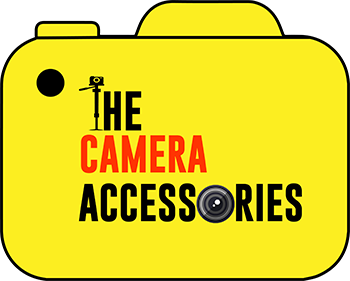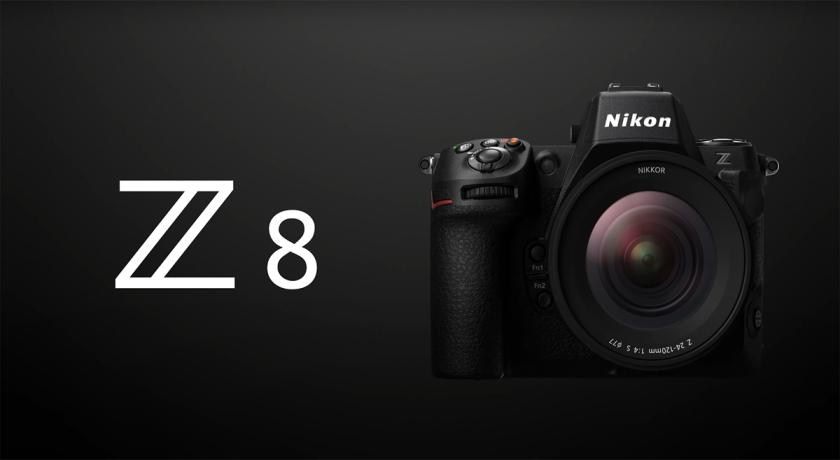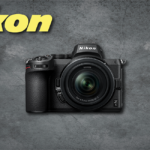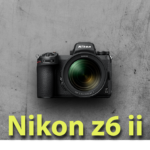Nikon Z8 utilizes the same stacked CMOS sensor with a rapid readout that makes a mechanical shutter completely unnecessary. Z9 crammed into a smaller frame. It is quite pleasant to use and has more direct-access buttons than these cameras, although it is somewhat chunkier than the Z6/7 range. Many of its form factors and handling characteristics are derived from the Nikon D850.
Which is known as the most outstanding all-around DSLR ever made. stands an excellent likelihood of contesting the Nikon D850 for the title of the best general full-frame mirrorless camera ever established.
Specification:
- 45.7MP full-frame stacked CMOS sensor; Expeed 7 image processor
- 493 phase- and 493 contrast-detect points for autofocus Five-axis stability with 5.5 stops (or up to 6 stops with some lenses)
- Continuous shooting: 120 frames per second for low-res JPEG, 30 frames per second for hi-res JPEG, and 20 frames per second for RAW.
- Video: 8bit or 10-bit H.265, 10-bit Apple ProRes 4:2:2 HQ, 12-bit in-camera; 8K up to 60p, 4K up to 120p ProRes RAW HQ
- Viewfinder: 100% coverage, 3.69 million dots, ultra-bright OLED 3.-inch touchscreen with bi-directional tilt functionality and 1.04 million dots
- Weight: 910g; Dimensions: 144 x 118 x 83mm Designed for years, there have been rumours about a Nikon Z8 mirrorless camera that would drop among the Nikon Z7 II and the Nikon Z9. Rumours about it were circulating long before the Nikon Z9 went on sale. Both “true sequel to the Nikon D850” and “baby Z9” are fair descriptors of the Nikon Z8, as stated by the business. It has an identical size and appears to be like the Z-series D850, but it combines almost all of the flagship Z9’s top requirements into a smaller. (and priced) body.
- The Sony A1 and Canon EOS R5 are two major brands’ competitors, but how does the Z8 compare? It could be the greatest Nikon camera we’ve ever seen.
Key features:
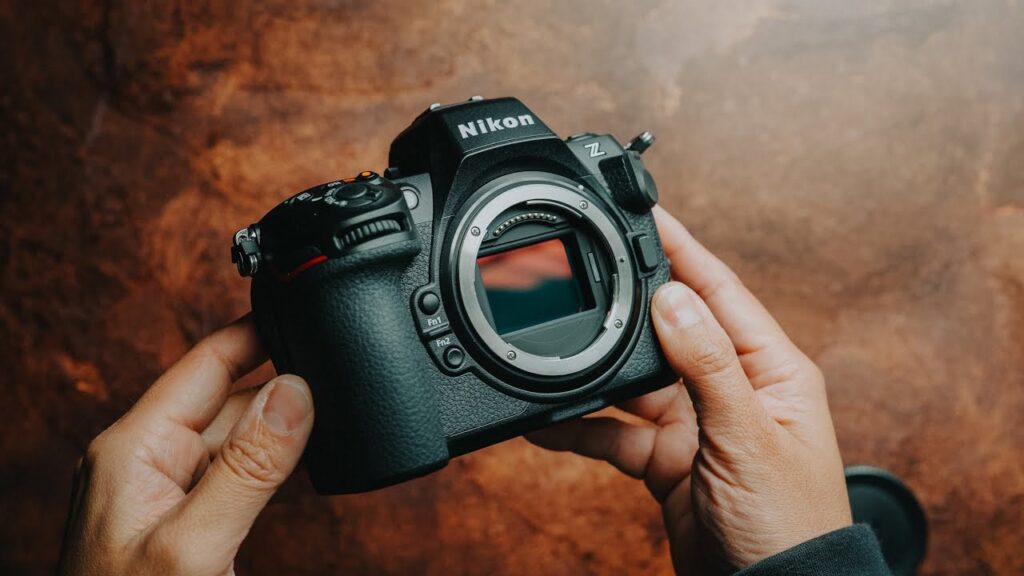
When shooting a subject that moves, or when the camera pans, the movement will be visible by the time the sensor generates. the complete image from top to bottom, giving the result a “sheared” appearance. Something that was before limited to the image being captured by a mechanical shutter.
There are more benefits to the shutter less design. The Z8 can shoot continuously at a staggering 120 frames per second, much like the Nikon Z9. Although it can take high-resolution 45.7MP JPEGs at 30 frames per minute. or RAW files at 20 frames per second, it can also produce low-resolution JPEGs (if you can call 11MP low-res pictures low-res at all). Additionally, it can fully autofocus and autoexposure between frames.
This speed freakery is brought about by the Z8 sharing the same cutting-edge Expeed 7 processor. that made its debut in the Z9, along with the advanced sensor and shutter less design. This future processor’s ability to take more than 1,000 raw photos at 20 frames per second before the buffer causes it to slow down is another benefit.
Your memory card is fast enough. You may also shoot high-quality photos at 30 frames per second with JPEGs until the card is filled.
Pros
- Great spec sheet that is like the Z9
- Many direct-access controls
- It costs over a grand less than the Z9
Cons
- battery life
- Not as intelligent as competitors’
- Still a big outlay
Nikon Z8: Photographic Clarity
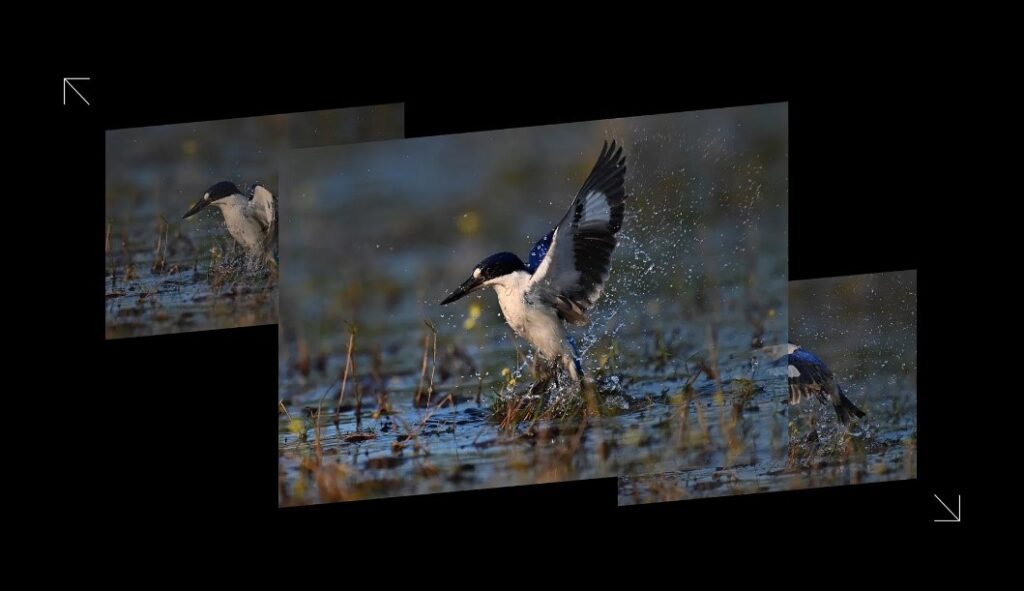
The Z8 & Z9 feature the same sensor arrangement, so discussing this issue was easy because we knew what to expect. Given the outstanding outcomes that this specific 45-megapixel sensor produces, this is a terrific feature to mimic. The Z8 has the same very low base ISO of 64, which produces photos with little noise at all and enables you to boost exposure in the shadows without doing any harm.
In those three categories, it will perform better than contemporary cameras with the same megapixel count. While it is true that the Z8 and Z9 only use an electronic shutter, this does have a bearing on the quality of the images. there is a tiny reduction in dynamic range.
The only cameras that may work better are the Z7II and D850 of Nikon.Rolling shutter is an issue that multiple electronic shutter cameras have, yet this one is not to be worried about as the Nikon Z8 sensor reads out very quickly. The Z8’s capability to shoot bursts at a high rate is additionally due to its electronic shutter. The quality of the pictures that I took in Yellowstone and the city of Calgary pleased me.
Nikon Z8: Duration of Battery Life
The Z9’s huge physical size was one of my primary issues. Smaller cameras without integrated battery grips are what I like. Yet this presents an obvious issue. Less space for a camera means a smaller battery. The Nikon Z8 operates on the dependable En-EL15C battery type, whereas it also supports in part the old En-EL15A and B types.
In everyday situations, a charged battery can take many more photos before needing to be changed. CIPA rates a charged battery at about 325 shots before needing to be recharged. I fired bursts over two whole days, averaging well over a thousand pictures every day, and I had to change the batteries once a day. A Nikon Z9 could have recorded more than a whole day.the Z8 could handle most imagined tasks with a few more EN-EL15s in the camera bag, but not a lot before needing a pit break.
Nikon Z8: Buffer Rates

Utilizing two memory card slots—one for a fast CF express card and one for a UHS-II SD card—is a thing that many photographers with professional equipment desire. It’s nice to have full storage or the option of copying all images taken in case of a card failure.
However, the Nikon Z8 is a fast-action beast of a camera that is suitable for wildlife, sports, and photojournalism. With a fast CF Express card, you could shoot more than 1,000 RAW images at 20 frames per second before the camera would slow down.
But, if you want to rely on the SD card slot as your primary memory card slot or as a redundant backup, things will slow down. I decreased the number of pictures on the SD card from an astonishing thousand to thirty to 40 before reaching the buffer’s limits.
If you use your SD card slot as your primary memory card slot or as a redundant backup, things are going to slow down. I decreased the total number of pictures on the SD card from an amazing thousand to 30 to forty before reaching the buffer’s limits.
Nikon Z8: Focusing

The focus system is one of the many components that the Nikon Z8 took over from the Z9. It suggests that then nikon Z8 includes one of my favourite tracking autofocus solutions. Beginning 3D tracking is a breeze. the Nikon subject detection environments are excellent for shooting animals or portraiture.
As a professional reviewer, I try never to make claims like this, as they are illogical. but I’m almost sure that the Z8 focuses more precisely and cleanly than the Z9. In simple terms, it appears I had more trouble focusing shots with the Z9. Although it has always been an excellent performer, sometimes it would miss pictures just like a regular camera.
Nikon Z8: Excessive heat

The Internet claims that then Nikon Z8’s overheating—or lack thereof—when shooting high-definition video was contradictory. Our tests showed that the Z8 had outstanding temperature control. Using the limits of the camera, we recorded 40 minutes of 8K 60p N-RAW video. It’s critical to think about this outcome in a wider context, even if it led to the camera’s ultimate shutdown. Almost 2 terabytes of storage were required for 40 minutes of recording in this mode, which is rarely used in everyday situations. 2 terabytes of storage were required for 40 minutes of recording in this mode, which is seldom utilized in real-world scenarios.
Oversampled 4K 60p is a record mode that would be utilized more often. The camera stopped functioning at this high-resolution level after 35 minutes. This is a good outcome, but some people may want to go further, in which instance the Nikon Z9 might be more suitable. But, using 4K 60p in the sub-sampled mode did not result. in any overheating alerts at all for a whole hour; that is a nice result if you’re willing to give up some clarity.
Z8 Range of dynamics:

The dynamic range is like that of the Z9, indicating that the faster speed of the sensor has a little read-noise cost. Yet, these are small differences that are only noticeable when you go past the boundaries of the camera’s shadow range. The Z8’s Raws will offer the most discerning landscape photographers plenty of flexibility.
The Z8 has the capability of filming video in 8K/30p in ProRes 422 HQ, H.265 or H.264, or 8K/60p in N-Raw format. It is possible to record 4K video at up to 120 frames per second (subsampled) or up to 60 frames per second (oversampled) using 8K capture.
Options for resolution bit depth Configurations
- N-Raw 60p/8K-120p at 4.1K (sub-sampled) 5.4K/60p (APS-C)—4K/120p with a 2.3x crop—12-bit SDR N-Log
- ProRes RAW HQ Bayer 4.1K/60p (sampled down) – 5.4K/30p (APS-C) – Twelve-bit Bayer
- ProRes: 422 HQ SDR N-Log: 1080/120p, 4K/60p, 10-bitSDR – N-Log 4:2:2
- H.265: 4K/120p (sub-sampled) 8K/30p -4K/60p (up from 8K) -10-bit or 8-bit SDR HDR (HLG) in 1080/120p -N-Log 4:2:0
- H.264, -1080/60p, 8-bit SDR, 4:2:0 -The Z8’s 90-minute record limit is the sole major distinction, as compared to
The Z9s provided 125 minutes, most likely because of heat buildup. Similar to the Z9, the camera’s typical colour modes in video mode had a base ISO of 200. If you switch to HLG, the base state shifts to ISO 400, which promotes the use of one-stop-less exposure to preserve an extra stop of highlights. The smallest ISO of 800 is required for N-Log to capture and hang onto two more stops of highlights.
CONCLUSION:
Using the Nikon Z8, you can get a camera that will help you in almost any photographic endeavour by having the speed and AF abilities of the Z9. in a smaller and more affordable package. While it is slightly bigger than its rivals, all aspects of its abilities appear to be on par with those of its predecessors. It’s probably the most complete camera we’ve assessed so far.
